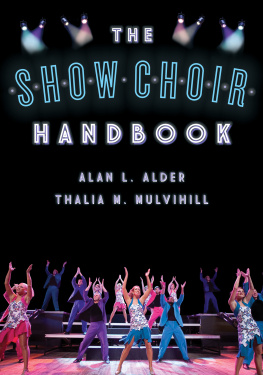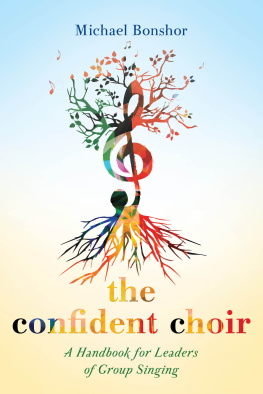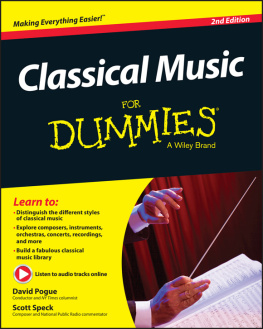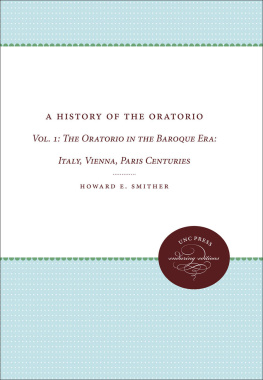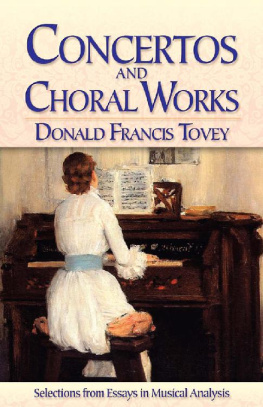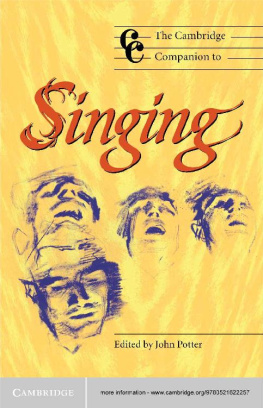CHORAL REPERTOIRE
CHORAL REPERTOIRE
DENNIS SHROCK


Oxford University Press, Inc., publishes works that further
Oxford Universitys objective of excellence
in research, scholarship, and education.
Oxford New York
Auckland Cape Town Dar es Salaam Hong Kong Karachi
Kuala Lumpur Madrid Melbourne Mexico City Nairobi
New Delhi Shanghai Taipei Toronto
With offices in
Argentina Austria Brazil Chile Czech Republic France Greece
Guatemala Hungary Italy Japan Poland Portugal Singapore
South Korea Switzerland Thailand Turkey Ukraine Vietnam
Copyright 2009 by Oxford University Press, Inc.
Published by Oxford University Press, Inc.
198 Madison Avenue, New York, New York 10016
www.oup.com
Oxford is a registered trademark of Oxford University Press
All rights reserved. No part of this publication may be reproduced,
stored in a retrieval system, or transmitted, in any form or by any means,
electronic, mechanical, photocopying, recording, or otherwise,
without the prior permission of Oxford University Press.
Library of Congress Cataloging-in-Publication Data
Shrock, Dennis.
Choral repertoire / Dennis Shrock
p. cm.
Includes index
ISBN 978-0-19-532778-6
1. Chorusesbibliography I. Title
ML128.C48 S57 2009
782.5 22 2008014351
1 3 5 7 9 8 6 4 2
Printed in the United States of America
on acid-free paper
PREFACE
The purpose of this book is to present and discuss the choral music of the most significant composers from the Western Hemisphere throughout recorded history. The selection of composers has been determined by their impact on the development of choral music as an art form, and the selection of repertoire has been determined by the relative merit of compositions as reflected by critical acclaim, popularity and frequency of performance, and availability in academic and commercial publications. In other words, composers have been chosen on the basis of their historical significance, and compositions have been identified on the basis of their being acknowledged as artistically superior works of art, on their presence in programs of credited ensembles, and on their existence in scholarly editions. The selection process, therefore, has focused on representative composers and compositions, not on an unqualified and all-inclusive coverage of composers and their music. By being selective, it is hoped that masterpieces of Western choral music will be brought to light, comprehended, and performed more frequently, and that students, practitioners, and enthusiasts of choral music will be guided through the maze of a large and complex array of repertoire. As an aid in this process, composers and repertoire are presented according to their relative importance. The most prominent composers are given separate entries, with performance annotations of their most noteworthy compositions; the composers of lesser prominence are also given separate entries, but with discussion of their repertoire contained in narrative form; and composers of least prominence are discussed in the beginning material of appropriate countries. All composers discussed in the book are listed in the composers index; the first page indication following a composers name, generally in bold typeface, is the primary entry. The following pages are in regular typeface and indicate secondary references, with specific composer names in parentheses. Most lists of composers in the narrative introductions to eras and countries are in chronological order.
In the process of choosing composers and compositions, decisions have been made regarding the relative status of a composer as a producer of original compositions and the relative originality of those compositions. Composers whose choral output consists mostly of or who are known primarily for their arrangements of preexisting material (i.e., folk songs or spirituals) are generally excluded, as are the arranged compositions themselves. Arrangements are included, however, if they are a part of a composers output of original repertoire or if they are substantially original in design. For instance, Renaissance masses that incorporate Gregorian chants or that parody previously composed motets are essentially original compositions, while harmonizations of folk songs and hymns are not.
The compositions that are discussed and annotated are considered choral if they were composed for an ensemble of voicesgenerally soprano, alto, tenor, and bass (SATB). This criterion includes music composed specifically for ensembles of solo voices as well as music composed for ensembles comprised of multiple singers per voice part. Reasoning for such an inclusive definition of choral music acknowledges and is based on performance practices in existence during the era of composition as well as in subsequent years. For example, madrigals and chansons that were composed during the Renaissance era, while conceived as solo vocal compositions, were frequently performed (with the approval of the composers) by multiple voices and instruments per part. Also, vocal chamber works of the nineteenth century (Brahms quartets, for example) have a long and continuous history of being performed by choral as well as by solo ensembles. Indeed, madrigals, chansons, and other vocal chamber works have been and are on the whole performed more by choral ensembles than by soloists.
The material in the book is organized and presented in three categorieshistorical era, countries within the era, and composers within the country or group of countries. The eras are arranged consecutively in order of time, the countries are arranged according to their relative importance in initiating the era and influencing other countries, and the composers are listed chronologically according to their birthdates (either documented or assumed). Each era begins with a discussion of its time frame and scope and also with an overview of general stylistic traits, and each country or group of countries begins with a listing of representative composers, genres, and musical characteristics. Genres are identified according to broad categories of definition, structure, usage, and style. For instance, requiems are included as masses, passions are included as oratorios, and the various subcategories of motets (e.g., offertories, graduals, and antiphons) are all grouped together.
Composers have been placed in eras based on the overall or most salient characteristics of their choral music, their influence in history, and/or their traditional classification by scholars. These are particularly important considerations regarding transitional composersthose who lived and worked in times of change and who wrote music in both old and new styles. Thus Guillaume Dufay, Gilles de Bins Binchois, Jean de Ockeghem, and Antoine Busnois are classified as Renaissance composers because their most significant choral output exhibits traits that would become standard during the Renaissance era; Heinrich Schtz, who lived well into the Baroque era and who subscribed to prima prattica ideals throughout most of his life, and Claudio Monteverdi, whose early music is Renaissance in style, are both identified as Baroque because their mature and most recognized repertoire is infused with Baroque traits (in addition, Monteverdi was one of the chief proponents of the seconda prattica); Franz Schubert composed a considerable amount of music that scholars classify as Romantic in nature, although he is included with Classical era composers since his choral output (especially that which is sacred) is similar in most ways to other Classical era compositions; on the other hand, while Ludwig van Beethoven composed a considerable amount of music that scholars classify as Classical in nature, his most important choral works and his historical impact are Romantic.
Next page

